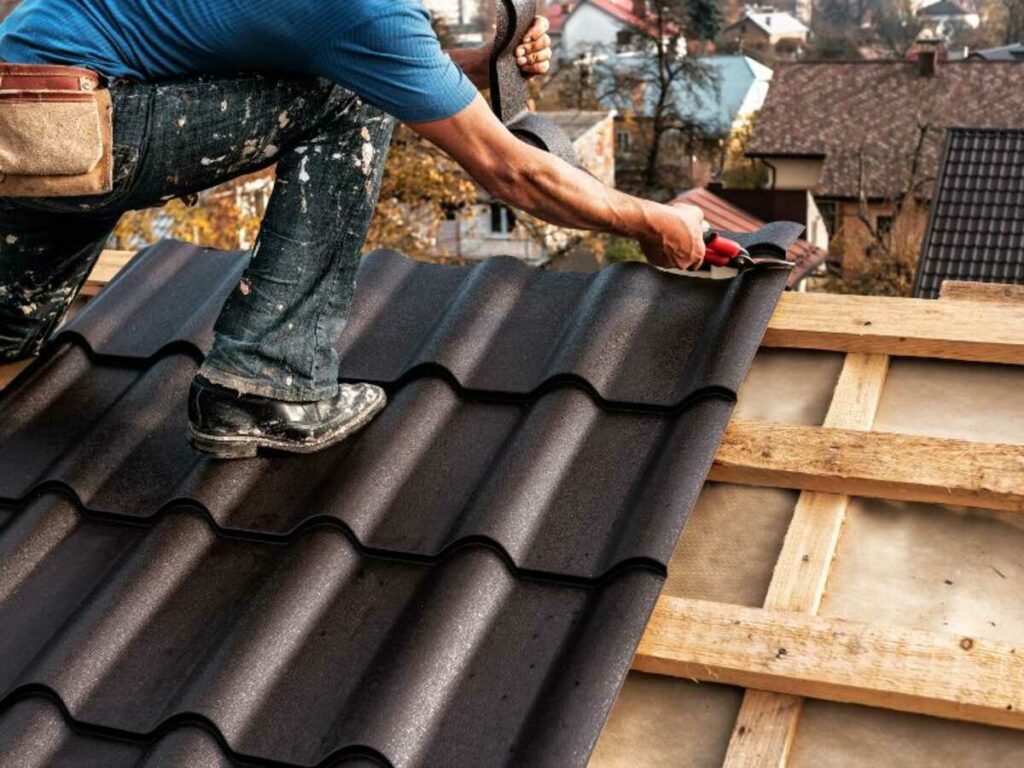Your roof is a critical component of your home, providing shelter and protection from the elements. Over time, however, wear and tear can take its toll, leaving you with the decision of whether to repair or replace it. This decision is crucial, as it directly impacts the safety, integrity, and longevity of your home. In this blog, we’ll guide you through the factors to consider when deciding between roof repairs and a complete replacement, without promoting DIY fixes.
The Importance of a Healthy Roof
Before diving into the decision-making process, let’s briefly discuss why a healthy roof matters:
- Weather Protection: A well-maintained roof shields your home from rain, snow, hail, and harsh sunlight. It prevents water leaks, which can cause structural damage and mold growth.
- Energy Efficiency: A properly insulated and sealed roof helps regulate indoor temperatures, reducing energy consumption and lowering utility bills.
- Structural Integrity: The roof plays a significant role in your home’s structural stability. A compromised roof can lead to weakened walls and ceilings.
- Property Value: A well-maintained roof enhances your home’s curb appeal and resale value, making it an important investment.
When to Consider Roof Repairs
- Age of the Roof: Most roofs have a lifespan of 20–30 years, depending on the material used. If your roof is relatively new and the issues are minor, repairing specific areas may suffice.
- Isolated Damage: If the damage is limited to a small section of the roof, such as a few missing shingles or a minor leak, repairs can be a cost-effective solution.
- Routine Maintenance: Regular inspections and maintenance can prolong your roof’s life. If you’ve been proactive in addressing minor issues as they arise, repairs may be all that’s needed.
- Budget Constraints: Roof replacement is a significant investment, so if your budget is limited, repairing specific problems may be a more feasible option in the short term.
- Professional Assessment: Consult with a roofing professional to assess the extent of the damage and determine whether repairs are a viable solution. They can provide expert advice based on your specific situation.
When to Consider Roof Replacement
- Age and Condition: If your roof is nearing the end of its expected lifespan or shows signs of extensive wear, such as widespread shingle damage, curling, or sagging, replacement is likely the best choice.
- Multiple Repairs: Frequent and recurring repairs can be a sign that your roof’s overall condition is deteriorating. Continuously patching up a failing roof can become more expensive in the long run.
- Structural Issues: If your roof has structural issues, such as rotting or sagging decking, it’s a clear indication that a replacement is necessary to ensure your home’s safety.
- Extensive Damage: Severe weather events, like storms or hurricanes, can cause substantial damage that goes beyond simple repairs. In such cases, replacing the roof is often the only option.
- Energy Efficiency: An outdated and poorly insulated roof can significantly impact your home’s energy efficiency. A new roof with modern materials can lead to energy savings over time.
- Aesthetic Improvements: If you’re looking to enhance your home’s curb appeal or increase its resale value, a new roof can be a wise investment, especially when combined with an updated design and color.
- Long-Term Investment: Roof replacement is a long-term investment that can provide peace of mind and protect your home for years to come.
Consulting with a Roofing Professional
Ultimately, the decision to repair or replace your roof should be based on a thorough evaluation by a roofing professional. Here are some steps to follow when seeking expert advice:
- Inspection: Schedule a comprehensive roof inspection with a reputable roofing contractor. They will assess the condition of your roof and identify any underlying issues.
- Assessment: After the inspection, the contractor should provide a detailed assessment, explaining the extent of the damage and whether repairs or replacements are recommended.
- Materials and Options: Discuss the various roofing materials available and the pros and cons of each. Consider factors such as durability, maintenance requirements, and energy efficiency.
- Cost Estimate: Request a cost estimate for both repairs and replacements. While cost is a factor, remember that investing in a new roof can offer long-term benefits.
- Timely Action: Once you have all the information, make an informed decision promptly. Delaying necessary roof work can lead to more extensive damage and higher costs in the future.
Conclusion
Maintaining a healthy roof is vital to the well-being of your home and your family. When faced with the choice between repairs and replacement, consider factors such as the age of your roof, the extent of damage, your budget, and long-term goals. Above all, consult with a professional roofing contractor who can provide expert guidance tailored to your specific needs. Making the right decision now will ensure your home remains safe, comfortable, and protected for years to come.
Brea Roofing https://www.brea-roofing.com

